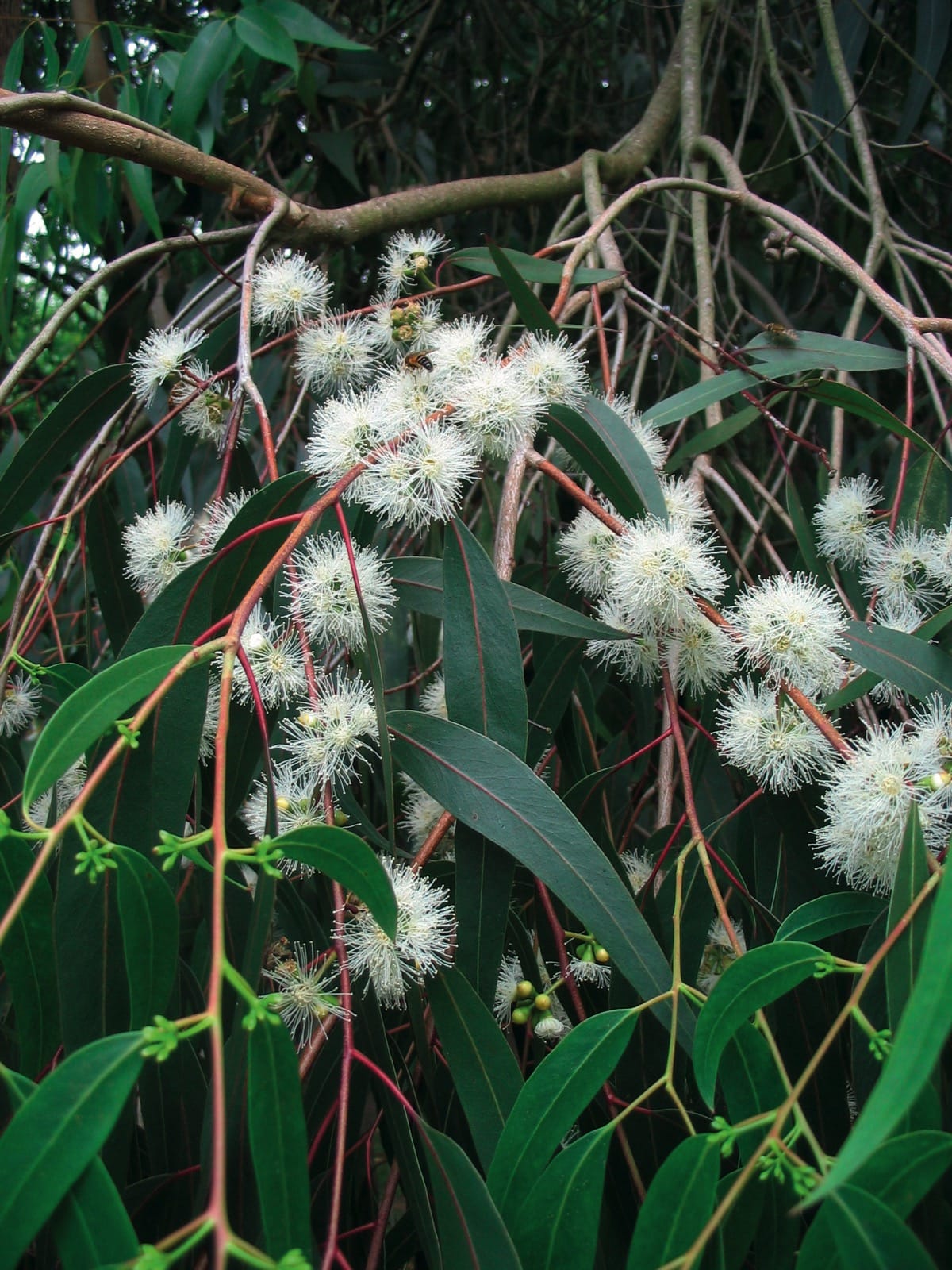Eucalyptus macarthurii
Credits
Article from New Trees by John Grimshaw & Ross Bayton
Recommended citation
'Eucalyptus macarthurii' from the website Trees and Shrubs Online (treesandshrubsonline.
Genus
Common Names
- Camden Woollybutt
Other taxa in genus
- Eucalyptus acaciiformis
- Eucalyptus albida
- Eucalyptus amygdalina
- Eucalyptus archeri
- Eucalyptus blakelyi
- Eucalyptus bridgesiana
- Eucalyptus brookeriana
- Eucalyptus camaldulensis
- Eucalyptus camphora
- Eucalyptus chapmaniana
- Eucalyptus cinerea
- Eucalyptus coccifera
- Eucalyptus cordata
- Eucalyptus crenulata
- Eucalyptus cypellocarpa
- Eucalyptus dalrympleana
- Eucalyptus delegatensis
- Eucalyptus elliptica
- Eucalyptus fastigata
- Eucalyptus fraxinoides
- Eucalyptus globulus
- Eucalyptus gregsoniana
- Eucalyptus gunnii
- Eucalyptus johnstonii
- Eucalyptus kybeanensis
- Eucalyptus lacrimans
- Eucalyptus laophila
- Eucalyptus leucoxylon
- Eucalyptus macrorhyncha
- Eucalyptus mannifera
- Eucalyptus melliodora
- Eucalyptus mitchelliana
- Eucalyptus moorei
- Eucalyptus morrisbyi
- Eucalyptus neglecta
- Eucalyptus nicholii
- Eucalyptus nitens
- Eucalyptus nova-anglica
- Eucalyptus obliqua
- Eucalyptus oreades
- Eucalyptus ovata
- Eucalyptus parvula
- Eucalyptus pauciflora
- Eucalyptus praecox
- Eucalyptus radiata
- Eucalyptus regnans
- Eucalyptus remota
- Eucalyptus risdonii
- Eucalyptus rodwayi
- Eucalyptus rubida
- Eucalyptus saligna
- Eucalyptus sideroxylon
- Eucalyptus stellulata
- Eucalyptus subcrenulata
- Eucalyptus tenuiramis
- Eucalyptus urnigera
- Eucalyptus viminalis
Tree to 40 m, 1.2 m dbh. Bark rough, fibrous and greyish brown on lower trunk and major branches; smooth and grey above, peeling in ribbons that often accumulate in the crown. Branchlets red. Juvenile leaves sessile, lanceolate to ovate or rounded, dull green. Adult leaves thick and dull green, 8.5–19 × 0.8–1.6 cm, narrowly lanceolate, often falcate, lateral veins indistinct, margins entire, apex acuminate; petiole slightly flattened, 0.8–1.2 cm long. Inflorescences solitary, axillary; umbellasters with seven flowers (or more). Flower buds ovoid or spindle-shaped; hypanthium 0.2–0.3 cm wide; stamens white or cream. Capsule hemispherical, conical or bell-shaped, 0.3–0.6 cm diameter; valves three to four, slightly exserted. Chippendale 1988. Distribution AUSTRALIA: New South Wales (Central Tablelands). Habitat Open forest near watercourses between 500 and 1200 m asl. USDA Hardiness Zone 8. Conservation status Not evaluated. Illustration NT346.
The Camden Woollybutt gets its extraordinary English name from the shaggy bark at the base of its trunk, and the town of Camden. It was in this area that the Macarthur family established the first Merino sheep flock in Australia, and the specific epithet commemorates the botanically interested Sir William Macarthur (Kelly et al. 1983). Eucalyptus macarthurii is one of the most magnificent of the gums that are genuinely hardy in most of the British Isles, although the finest specimens are in the usual gardens of the coastal fringe. The largest recorded was measured at 25 m (53 cm dbh) at the John F. Kennedy Arboretum, Co. Wexford, in 2000 (TROBI). At Logan a tree planted in 1989 was about 20 m tall (56 cm dbh) in 2006 (TROBI) and is a beautiful rounded specimen with spreading branches, well clad in narrow green leaves and abundant bright white flowers when observed for New Trees, also in 2006. The branches can develop from quite low down to result in a broad, heavy-set tree with a dense crown, rather unlike the more familiar upright, airy eucalypts. Young trees were undamaged at Lullingstone in the frosts of November 2005, and it is usually very well rooted into the ground so not prone to wind rock. One fault is that its top can blow out (Gum Group 2007), and it is (in Australia) prone to dieback and branch rot, and is thus recommended there more for use in open spaces than as a street tree (Kelly et al. 1983).

